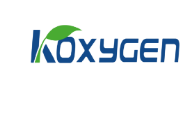Home oxygen concentrators have the following characteristics and functions:
1. Convenient and easy to use: Home oxygen concentrators are generally small in size and light in weight, and are simple to operate. Usually, just plug in the power and turn on the switch to start oxygen production. There is no need for a complicated installation and debugging process, making it convenient for users to use them at home by themselves.
2. Safe and reliable: They are designed with multiple safety protection devices, such as overload protection and leakage protection, to ensure safety during the use process. At the same time, advanced oxygen production technologies such as molecular sieves are adopted, and the oxygen production purity is stable, without generating harmful gases.
3. Adjustable: They can adjust the oxygen flow rate and concentration according to the different needs of users. Generally, the oxygen flow rate can be adjusted within a range of 1-5 liters per minute or even wider, to meet the oxygen inhalation needs of different people in different scenarios.
Functions:
1. Relieve hypoxia symptoms: For patients with chronic diseases such as chronic obstructive pulmonary disease, asthma, and cardiovascular and cerebrovascular diseases, as well as people who are prone to hypoxia, such as the elderly, pregnant women, and people in high-altitude areas, home oxygen concentrators can provide additional oxygen, relieve hypoxia symptoms such as dyspnea, dizziness, and fatigue, improve physical functions, and enhance the quality of life.
2. Promote metabolism: Appropriate oxygen inhalation can increase the oxygen content in the blood, promote the body's metabolism, accelerate the oxidation-reduction process of cells, contribute to the normal operation of various organs of the body, enhance immunity, and prevent the occurrence of diseases.
3. Relieve fatigue: In the modern fast-paced life, people often face problems such as high work pressure and insufficient sleep, and are prone to physical fatigue and listlessness. Oxygen inhalation can quickly replenish the oxygen required by the body, improve the hypoxia state of the brain and the body, relieve fatigue, refresh the mind, and improve work efficiency and learning ability.
4. Assist in rehabilitation treatment: For some patients after surgery or with respiratory diseases, home oxygen concentrators can be used as auxiliary treatment devices to help patients recover better. Oxygen inhalation helps to promote wound healing, reduce the burden on the lungs, and speed up the body's recovery process.
